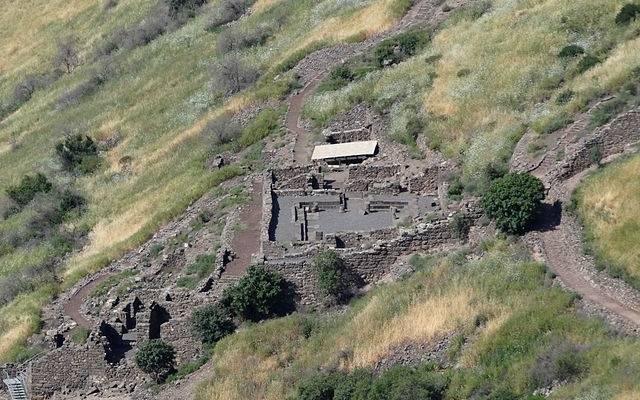After stealing millennia-old artifacts from the Gamla archaeological site in northern Israel, the thief returned them with a note: “They brought me nothing but trouble. Don’t steal antiquities.”
Amos Cohen, an employee at the Museum of Islamic and Near Eastern Cultures in Be’er Sheva, could not believe his eyes last week when he opened a bag left in the museum’s courtyard: two sling stones, used in antiquities as artillery, were laying in the bag.
A typed note attached to the bag by an anonymous individual read: “These are two Roman ballista balls from Gamla, from a residential quarter at the foot of the summit. I stole them in July 1995 and since then they have brought me nothing but trouble. Please, do not steal antiquities!”
The museum director, Dr. Dalia Manor, rushed to report the incident to the Israel Antiquities Authority (IAA), and soon these stone projectiles will join other ballista balls from Gamla that are researched at the National Treasures Department. Many other stones such as these are on display at the Gamla Nature Reserve.
This is not the first time the IAA has encountered antiquities robbers who have shown remorse for their theft or unauthorized possession of artifacts. In the past, a 2,000 year old Jewish coffin was returned to the Unit for the Prevention of Antiquities Robbery (UPAR). It had been kept in the bedroom of a Tel Aviv resident until he realized the morbid meaning of the find.
In another case, a cleric from the state of New York asked for forgiveness for a member of his congregation whose conscience was tormented by the fact he took a stone from Jerusalem more than a decade earlier. The stone was returned to the National Treasures.
Dr. Danny Syon of the IAA, who excavated at Gamla for many years, welcomed the return of the stones. “Almost 2,000 such stones were found during the archaeological excavations in the Gamla Nature Reserve, and this is the site where there is the largest number of ballista stones from the Early Roman period. The Romans shot these stones at the defenders of the city in order to keep them away from the wall, and in that way they could approach the wall and break it with a battering ram. The stones were manually chiseled on site by soldiers or prisoners,” he explained.
As Israel is brimming with artifacts from multiple eras which can be found almost anywhere you go, theft is fairly common. The IAA stresses that the robbers cause tremendous damage to the delicate sites and cause the loss of historical evidence, many times thousands of years old.
Excavating in antiquities sites without a license and destroying such sites constitute severe violations of the law in Israel, for which the law prescribes up to five years in prison.
There have also been incidents in which citizens exhibited exemplary behaviour when they randomly discovering artifacts and reported them, thus contributing to Israel’s understanding of its rich history and culture.
By: United with Israel Staff
The Land of Israel has provided the backdrop for some of the most important events in human history. From the Old City in Jerusalem to the Sea of Galilee, people from all over the globe visit the Holy Land each year to take in the breathtaking scenery and inspiration of Israel. Now you can experience this beauty for yourself from the comforts of home and maybe plan a trip of your own to Israel. Get the free, exclusive eBook from United with Israel: The 10 Best Places to Visit in Israel.
Free Ebook: 10 Best Places to Visit in Israel
